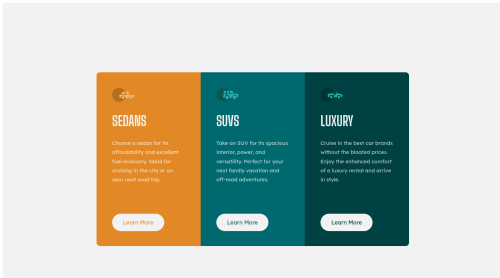Submitted over 3 years agoA solution to the 3-column preview card component challenge
CSS and HTML
@alidarcan

Solution retrospective
This is my first attempt in here. I am newbie. How can I add desktop and mobile seperately? Could you check my code, too? I
Code
Loading...
Please log in to post a comment
Log in with GitHubCommunity feedback
No feedback yet. Be the first to give feedback on Ali Rıza Darcan's solution.
Join our Discord community
Join thousands of Frontend Mentor community members taking the challenges, sharing resources, helping each other, and chatting about all things front-end!
Join our Discord